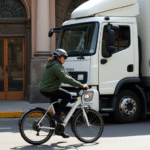Understanding the Need for an Emergency Backpack in Mexico
Mexico experiences over 90 earthquakes of magnitude four or higher annually, accounting for 60% of global seismic activity, as reported by the Secretaría de Gestión Integral de Riesgos y Protección Civil of México City. This places the country among those with the highest seismic activity worldwide, making preparation crucial for any potential disaster.
Who is Karla and why is her experience relevant?
Karla, a resident of Mexico, has been maintaining her emergency backpack since the two significant earthquakes in September 2017. Her experience highlights the importance and affordability of having such a kit.
Essential Items for Your Emergency Backpack
Food Supplies
- Non-perishable food items: Choose lightweight, individual, easy-to-open canned goods that provide energy and do not cause allergies in your family. Examples include chocolates, energy bars, candies, and dried fruits.
Clothing
- Warm clothing: Include blankets, thermal sheets, raincoats, and extra footwear in case your current pair gets wet.
Medications
- Prescription medications: Keep any prescribed medications that your family members use regularly. Regularly check the expiration dates and replace them in time.
Infant Supplies
- Baby essentials: Pack canned milk, baby bottles, baby food, and diapers if there are infants in your family.
Communication Devices
- Radio: Keep a radio that can function without internet, TV, or cellular connections. It should be AM/FM and have backup batteries or a hand-crank charging option to stay informed about official announcements and alerts during emergencies.
Keys and Money
- House keys: Keep a spare set of keys for your home, business, and car to avoid being locked out during stressful situations.
- Cash: Carry both bills and coins, as banking services may be unavailable during emergencies.
Important Documents
- Copies of essential documents: Keep originals and copies of birth certificates, marriage certificates, passports, health insurance membership cards, and any other relevant identification or affiliation documents. Store these digitally on a USB drive or cloud service, but have physical copies in waterproof bags if necessary.
Other Essential Items
- Water: Pack bottled water.
- Flashlight: Ensure you have a flashlight with extra batteries, as power outages are common during disasters.
- Lighter or matches: Waterproof options are preferable.
- Whistle: To signal for help if escape routes are blocked.
- First-aid kit: A basic one should cost around 450 pesos.
- Extra plastic bags: To separate and carry wet items.
- Pen and notebook: For note-taking or documentation.
- Multi-tool: A versatile tool for various situations.
Cost of an Emergency Backpack
According to the Comisión Nacional para la Protección y Defensa de los Usuarios de Servicios Financieros (Condusef), the approximate costs for essential items are:
- Flashlight: 100-200 pesos
- Radio: 300-600 pesos
- Bottled water: 60-100 pesos
- Canned food (tuna, cookies, cereal): 130-200 pesos each
- Warm clothing (polar fleece, raincoat): 200-600 pesos and 80-200 pesos, respectively
- Hygiene items (soap, toilet paper, wet wipes): 35-90 pesos, 25-170 pesos, and 20-70 pesos, respectively
- Lighter or matches: 2-25 pesos
- Whistle: Up to 130 pesos
- Copies of documents: Around 50 pesos
- First-aid kit: Approximately 450 pesos
- Extra keys: 20-50 pesos
Using the lowest-priced items, Karla estimates having spent around 800 pesos for her emergency backpack for two people and her dog. The total cost will vary based on family size and specific items chosen.
Where to Store Your Emergency Backpack
The Mexican government recommends keeping your emergency backpack in an easily accessible location, such as near the front door of your home. Additionally, it’s advisable to have one in your vehicle or workplace.
“Your emergency backpack should always be readily available and in a crucial location along the escape route. It must also be up-to-date and easy to carry during an emergency,” advises Hortencia, a member of the protection civil team in her building.
Did you find this information helpful? Share your thoughts with [email protected].






